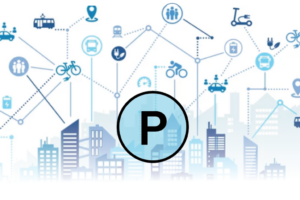By Ravali Kosaraju, PE, PTOE
In some corners of the parking industry “mobility” is considered a dirty word. For some professionals who have devoted their careers to finding new ways for people to park conveniently and safely, the current emphasis in mobility is off-putting.
In fact, though, parking and mobility are intrinsically connected. Mobility isn’t meant to replace parking; it’s meant to collaborate with it. In fact, as counterintuitive as it may seem, parking is an essential element of mobility.
To understand this, it’s first necessary to take a step back and look at what mobility really is. Mobility is the essential element of urban life. It’s about access. Access to the things people need to live a healthy and rewarding life. Access to friends and relatives, healthcare and other essential services, entertainment, shopping options, work, and recreation opportunities. Transportation is an element of mobility, but it’s not the totality of mobility. Rather, mobility is about having high quality transportation options.
What makes mobility options “high quality”? First is choice. Do residents and visitors have multiple transportation options? Are there opportunities to use their personal vehicles, access ride-share servicers, utilize public transit, and take advantage of micromobility? Is the community pedestrian friendly? Having a single transportation option isn’t conducive to mobility.
Time is also a key element. If it takes too long to go to and from destinations in a community, because of traffic or because there are too many stops on a bus line or subway line, you don’t have mobility. No one wants to spend hours to get to a grocery store and back, or from work and back.
Finally, safety is a key element of mobility. If it isn’t safe to walk, drive, take public transit, or bike you don’t have mobility.
So, transportation doesn’t equal mobility. You must offer…




